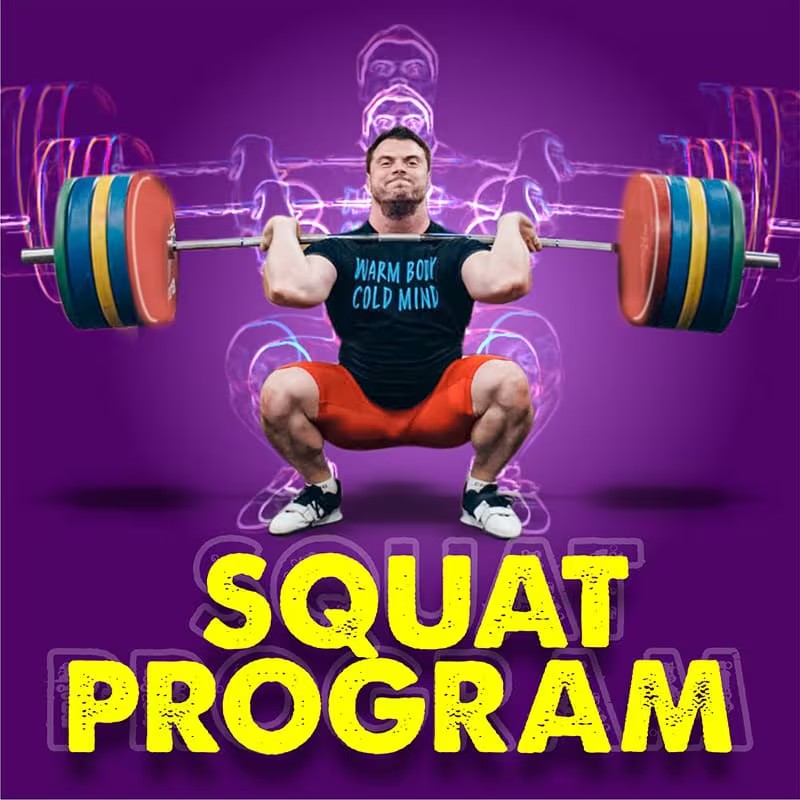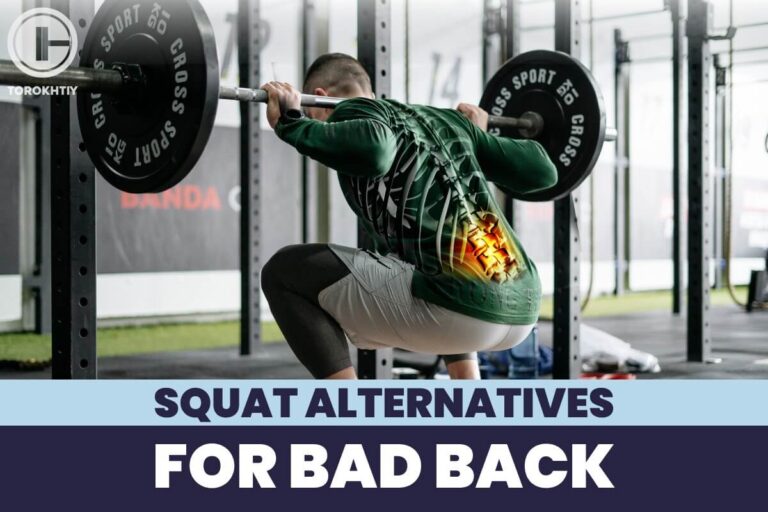How Much Does A Squat Bar Weigh? Standards Explained
In the world of strength, training and fitness understanding the specifics of the equipment used is not just about getting acquainted with the tools. It’s a fundamental aspect of optimizing performance and ensuring safety among the various pieces of equipment.
The squat bar stands out as a pivotal element in the arsenal of both novice and seasoned lifters. Knowing the weight of your squat bar is crucial as it directly influences the tracking of progress, the calculation of total weight lifted and the adjustment of training intensity.
A standard squat bar weight about 44 lbs (20 kg). When asking “how much does a squat bar weigh?” It is key to note safety bars can be heavier, ranging from 44 to 66 lbs (20 to 30 kg).
Squat bars come in various forms, each designed to cater to different needs and preferences. The standard squat bar is known for its robust simplicity and universal application. The safety squat bar is designed with additional safety and comfort. These features are two primary types that athletes and fitness enthusiasts frequently use.
This article delves into the specifics of these bars, addressing essential questions such as “how much does a squat bar weigh” and “what makes a safety squat bar different.” Understanding these nuances is key to harnessing the full potential of your strength training.
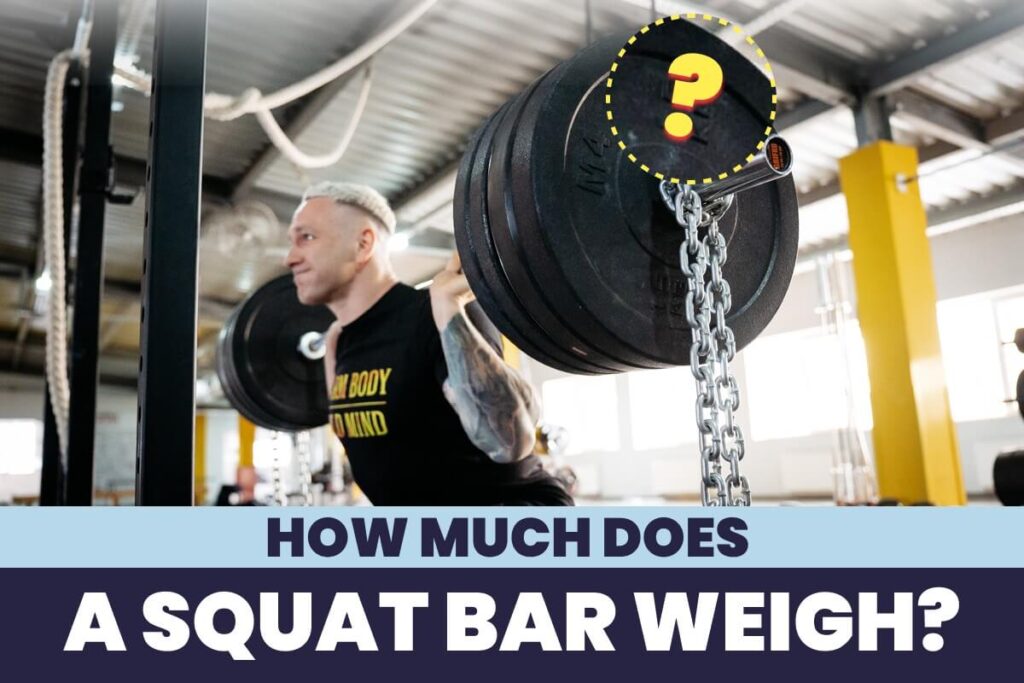
Understanding Squat Bars
Squat bar is an indispensable piece of equipment in weightlifting and strength training, designed primarily for a squat performance – one of the fundamental exercises for developing strength, lower body muscles and overall fist fitness.
The squat bar facilitates this by allowing athletes to load weight plates, according to their strength level, those providing a scalable resistance training tool.
The standard squat bar is also known as an Olympic barbell in many contexts, and is characterized by its straight, long steel bar with weight blades added on their end. It typically measures about 7 feet in length and weights around 44 lbs (20 kg) with diameter that makes it suitable for a firm group and balanced lifting.
This bar is versatile, used not just for squats, but for a range of weightlifting exercises.
In contrast, the safety bar offers a specialized design, featuring a padded yoke that rests on the shoulders and neck with handles extending forward for the lifter to grip.
How Heavy Is A Squat Bar In Different Context?
The perceived weight of a squat bar can significantly differ based on the variety of factors, most notably the lifter`s experience level and live in technique. For beginners even a standard 44 lbs (20 kg) of an unloaded squat bar can feel super heavy, as their muscles and nervous system adapt to the new stimulus of weightlifting.
Conversely, seasoned athletes might find the same bar almost negligible in weight, having acclimated to heavier loads through consistent training.
Technique also plays a crucial role in the perception of weight. A lifter with refined technique, who properly engages their core and maintains correct posture, can manage heavier weights more comfortably compared to those whose form is less developed, making the bar feel heavier than it is.
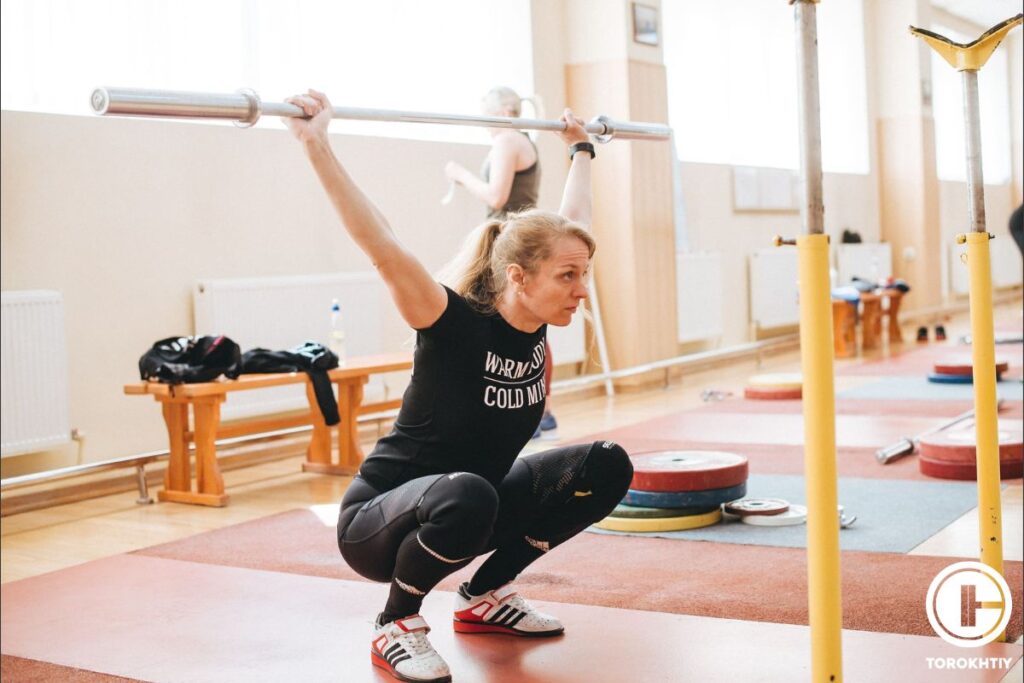
Moreover, the total weight lifted is not solely determined by the bar and the plates added to it. Additional equipment, such as collars, which are used to secure the weights in place, also contribute to overall mass.
Therefore, understanding ways in which the effective weight on the squat bar can vary, helps lifters adjust their training accordingly, ensuring both safety and optimal performance.
How Much Does Safety Squat Bar Weigh?
The safety squat bar, a variant designed with specific features to enhance comfort and safety, typically safety bar weight is between 44 to 66 lbs (20 to 30 kg). T
his variation in weight can be attributed to the bars unique construction, which includes additional components, not found on standard squat bars. The most noticeable features are the padded yoke and the handles.
The padded yoke is designed to sit comfortably on the lifters shoulders, reducing the pressure and discomfort that can be experienced with a standard bar. This padding, along with the bar`s curved design, distributes weight more evenly across the shoulders, offering a more comfortable lifting experience.
The handles protrude forward from the bar, allowing the lifter to maintain a group that promotes better balance and control during the lift. This aspect of the design not only adds to the bar`s weight, but significantly alters the lifting dynamics, enabling the user to maintain an upright posture more easily.
The ergonomic benefits are particularly advantageous for individuals with limited mobility or those recovering from injuries. By alleviating the strain of the wrists, shoulders and lower back, the safety squat bar permits continued strength training without exacerbating existing conditions.
Moreover, the safety squat bar`s design encourages the use of proper squatting technique, potentially reducing the risk of injury. Its structure helps in maintaining a neutral spine and promotes the engagement of the correct muscle groups during the squat.
For lifters experiencing shoulder discomfort or having difficulty with the barbell position required for traditional squats, the safety bar offers an effective alternative, enabling them to train safely and efficiently.
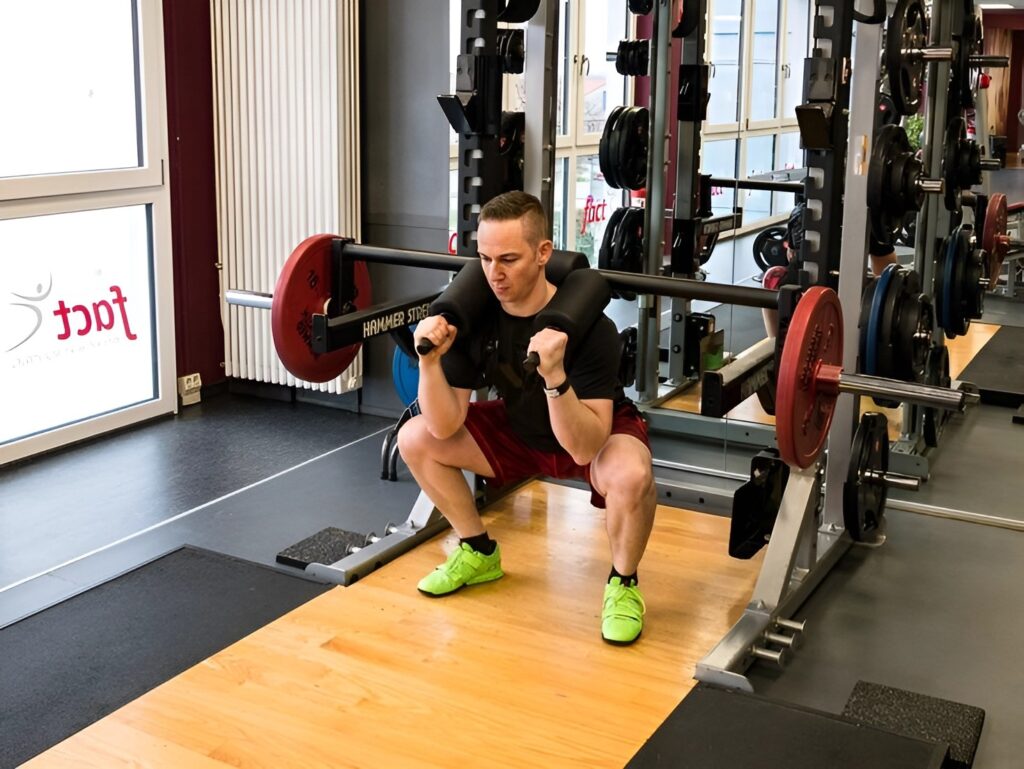
Comparing Squat Bar Weights
The standard squat bar and the safety squat bar present distinct weight profiles that cater to different training needs and preferences. The standard squat barbell weight around 44 lbs (20 kg) and serves as a foundational piece of equipment for a wide range of exercises beyond squats, including deadlifts and presses.
It’s uniform, weight and design make it a versatile choice for athletes for all levels.
In contrast the safety squat bar weights between 44 to 66 lbs (20 to 30 kg) with additional weight stemming from specialized features like the padded yolk and forward handles.
These design elements not only contribute to the bar`s heavier weight, but also offer ergonomic advantages, particularly for those with mobility issues or injury concerns.
🔻12 Week Squat Program by Oleksiy Torokhtiy
Do you want to double your squat strength? In just 12 weeks, you’ll be able to boost your squat results.
This program transforms any ordinary squat into a powerful athletic movement.
What’s included:
- 12 weeks of squat programming;
- Effective combination of sets, reps, and weights;
- Fully designed and coached by Oleksiy Torokhtiy;
- Over 60+ movements, banded work, and weight training;
- Accessory work for core, joint stability and injury prevention;
- Max out on back squat and front squat at the end.
Start now and boost your squat results!
FAQ
Is a Squat Bar 20 Kg?
Yes, a standard squat bar typically weighs 20 kg (44 lbs), however weights may vary slightly depending on the manufacturer and specific design of the bar.
Are All Squat Bars 45 Pounds?
No, not all squat bars are exactly 45 pounds. While the standard Olympic squat bar often weighs around 45 pounds (20 kg), weights can vary. Some specialized squat bars, my weight more or less.
Are Squat Bars 55 Lbs?
Standard squat bars are not typically 55 pounds. They usually wait around 45 pounds. There are specialty bars that can wait 55 pounds but these are less common.
Conclusion
Understanding the weight and design of different squat bars is essential for effective strength training. Knowing the specifics of these bars allows for more accurate tracking of lifting progress and insurance training sessions are both safe and productive.
This knowledge empowers liters to optimize their strength, training, routines, enhancing both performance and safety.
Let us know in the comment section – what part type is your favorite one?
References:
- Illmeier G, Rechberger JS. The Limitations of Anterior Knee Displacement during Different Barbell Squat Techniques: A Comprehensive Review. J Clin Med. 2023 Apr 19;12(8):2955. doi: 10.3390/jcm12082955. PMID: 37109294; PMCID: PMC10143703.
- Kristiansen E, Larsen S, Haugen ME, Helms E, van den Tillaar R. A Biomechanical Comparison of the Safety-Bar, High-Bar and Low-Bar Squat around the Sticking Region among Recreationally Resistance-Trained Men and Women. Int J Environ Res Public Health. 2021 Aug 6;18(16):8351. doi: 10.3390/ijerph18168351. PMID: 34444101; PMCID: PMC8392107.
- Kojic F, Ðurić S, Ranisavljev I, Stojiljkovic S, Ilic V. Quadriceps femoris cross-sectional area and specific leg strength: relationship between different muscles and squat variations. PeerJ. 2021 Nov 26;9:e12435. doi: 10.7717/peerj.12435. PMID: 34900415; PMCID: PMC8628634.
- Clark DR, Lambert MI, Hunter AM. Muscle activation in the loaded free barbell squat: a brief review. J Strength Cond Res. 2012 Apr;26(4):1169-78. doi: 10.1519/JSC.0b013e31822d533d. PMID: 22373894.
- Vigotsky AD, Bryanton MA, Nuckols G, Beardsley C, Contreras B, Evans J, Schoenfeld BJ. Biomechanical, Anthropometric, and Psychological Determinants of Barbell Back Squat Strength. J Strength Cond Res. 2019 Jul;33 Suppl 1:S26-S35. doi: 10.1519/JSC.0000000000002535. PMID: 29489722.
- Photos are made by VA SEVEN pinterest.com, Torokhtiy Media Team
Why Trust Us?
With over 20 years in Olympic Weightlifting, our team does its best to provide the audience with ultimate support and meet the needs and requirements of advanced athletes and professional lifters, as well as people who strive to open new opportunities and develop their physical capabilities with us.
By trusting the recommendations of our certified experts in coaching, nutrition, dietology, and sports training programming, as well as scientific consultants, and physiotherapists, we provide you with thorough, well-considered, and scientifically proven content. All the information given in the articles concerning workout programming, separate exercises, and athletic performance, in general, is based on verified data. We ensure that you can rely on our professionals’ pieces of advice and recommendations that can be treated as personalized ones which will benefit you and fully meet your needs.
The product testing process is described in more detail here
Author: Sergii Putsov
Head of Sport Science, PhD
Best Results: Snatch – 165 kg,
C&J – 200 kg
Sergii Putsov, Ph.D., is a former professional weightlifter and National team member, achieving multiple medals in the 94 kg weight category at national competitions. With a Master’s degree in “Olympic & Professional Sport Training” and a Sport Science Ph.D. from the International Olympic Academy, Greece, Sergii now leads as the Head of Sport Science. He specializes in designing training programs, writing insightful blog articles, providing live commentary at international weightlifting events, and conducting educational seminars worldwide alongside Olympic weightlifting expert Oleksiy Torokhtiy.

